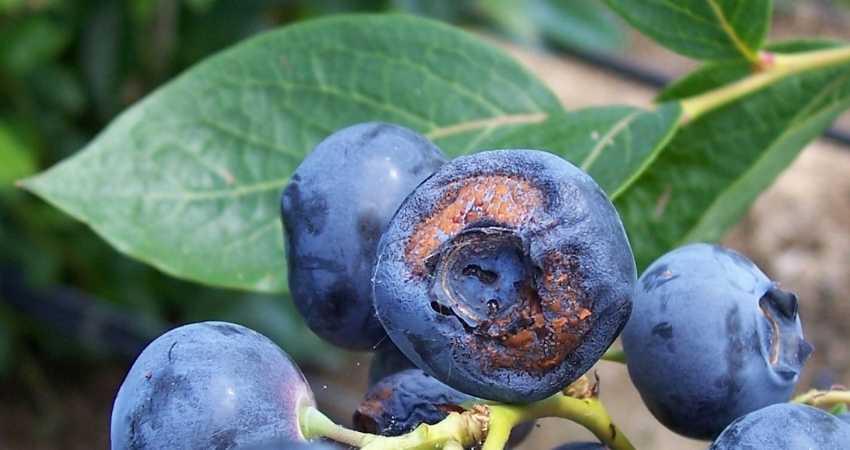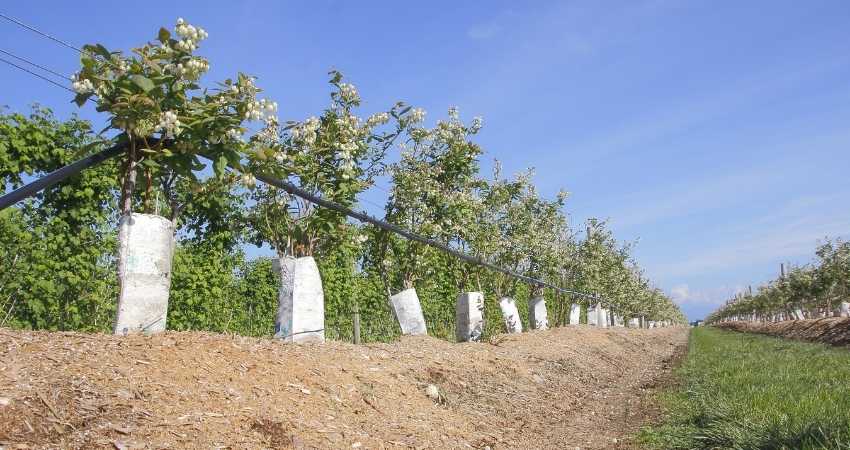Do Organic Blueberries Have Worms?
Many people tend to worry whether organically grown blueberries could have worms.
Organic blueberries may have worms. These pests are the larvae of blueberry flies. Blueberry flies prefer laying eggs inside the berries that later hatch into larvae, also known as worms or maggots. They can potentially devastate all berries. However, there are ways to control them.
This article explains about these pests, their life cycle, and how they can be controlled. Read to know more about other fascinating things that you may not have known about these worms.
How to Spot a Blueberry Worm
As a Certified Health Coach many clients ask me about fruit related topics like blueberries. Also, I purchase and consume them every day. Therefore, I have researched this topic in the past and present. Let’s examine it closely.
It may not be easy to see the worm once inside the berry and remain undetected until the blueberries are harvested. However, it becomes much easier to spot fully grown larvae because it comes out of the berry1.

These larvae measure approximately 0.8 cm (0.3 in) long, and they are mostly white. The eggs are also white and much smaller. You might be able to see these white worms on the affected fruits. They can spread so fast and ruin the whole harvest2.
The Life Cycle of a Blueberry Worm
Between late June and early July, the blueberry flies begin to emerge from the soil. Their emergence depends on soil temperature. If the spring temperatures have been hot, they will appear in mid-June. However, if the spring temperatures have been very cold, they’ll emerge in mid-July. These flies continue emerging until early August.
After mating, female flies lay their eggs on ripe blueberries with one egg on one fruit3. It can lay about 100 eggs implying it will infest 100 fruits.
The fly uses its pointed structure known as an ovipositor to pierce the blueberry’s skin and deposit a single white egg (Wikipedia: Ovipositor)). It also leaves behind a pheromone that deters other flies from laying their eggs on the same berry for the next few days.
The eggs take about a week to hatch into larvae (maggots) and start feeding on the berries. It remains inside the berry feeding for about three weeks. The berry begins to shrivel, and by the time the larva is full-grown, the fruit is almost destroyed.
By mid-August, the larvae leave the berries and drop to the soil. Then, burrow themselves in a depth of about 1-2 in (2.5-5 cm) below the surface. They spend fall, winter, and spring in the ground. In late summer, they emerge as adults.
Adults flies breed, and the cycle starts all over again. The process ultimately results in huge losses if it is not detected and corrected early enough.

How Can Blueberry Worm Infestations Be Prevented?
Blueberry fly is a common pest that affects blueberry farming and can lead to huge losses if the infestation is widespread. However, different approaches can be used to overcome them4.
Early Detection
One of the most effective approaches you can use to overcome the blueberry fly’s infestation is to detect them early. The following are some of the indicators showing you may be dealing with the infestation of blueberry worms:
An Increase in the Population of Adult Flies
A large population of a blueberry fly could be an indicator that breeding season is at hand, and you should act promptly to ensure your blueberries are safe. One of the effective ways you can prevent the flies from laying eggs is by trapping them5. You can do this by attracting them with a plastic cup containing cider vinegar, which can be placed on the branches near the tree.
Trapping can also be achieved by placing an adhesive on yellow triangles and strategically placing the triangles above the blueberries. In this case, you will have to use a bait to lure the flies.
The commonly used baits include bird excretions, plant sap, and honeydew3. You have to check your traps and replace them every week to trap as many flies as possible.
Premature Ripening
Infested berries tend to change color prematurely, which could be another sign of a blueberry fly’s infestation6. Part of this phenomenon can be attributed to an increase in enzymatic activity as the larvae consume berries from within. In case of early ripening, be sure to inspect the berries thoroughly for any signs of infestation.
Shriveling
Shriveling of the fruits is one of the leading indicators that your berries have been infested. Berries become flaccid because the larvae are consuming the berries from within. Ultimately such fruit cannot be salvaged, but it should be a warning that you need to act quickly to prevent more destruction of other berries.
Since blueberry larvae feed on a particular cluster at a time, you need to ensure that healthy-looking berries are not infested. However, you need to know that there are many other reasons why berries may shrivel and not necessarily a result of infestation7. Therefore, you may need to establish the cause of shriveling before taking any action.
Using of Neem
Neem has been used for several centuries, particularly in the southern part of Asia. It is widely used for its medicinal properties and in the cosmetics industry. Besides, it is famous for pest control and can be used to control blueberry fly8.
You can prepare it by drying neem seeds and adding them to water. The resultant solution is applied as a spray on the berries.
Neem presents a different degree of effectiveness, depending on the species used. Similarly, different products made through various extraction methods may have different active ingredients. Therefore, their efficacy may also vary. There are many registered neem products available in the market.
Using of Kaolin Clay
Kaolin refers to a naturally occurring clay that’s formed through weathering of rocks such as feldspar. They can be used in organic farming of blueberries because they act by irritating blueberry flies8.
When it lands on the insect’s body, it triggers intensive grooming, therefore, distracting the fly from laying eggs. Several kaolin products are available in the market today, and you can purchase them for your blueberries.
You can apply kaolin using any spray equipment and may require large amounts of water because it has to thoroughly cover most parts of the plant. Note also that kaolin leaves a white residue on the fruit that may be difficult to remove.
Cultural Approach
Cultural methods of controlling the infestation of maggots can be very effective. You can choose the early maturing or late-maturing varieties. Blueberries flies have an almost predictable pattern in their life cycle.
Therefore having varieties that ripen before they are ready to lay eggs will minimize the chances of infestation.
However, studies have identified some populations of maggots that emerge much later compared to ordinary maggots. It’s presumed that insecticides may have pushed to develop later than others.
Using Nets
If your blueberries cover a small area, you may use nettings to encase your plants and protect them from blueberry worms. The ideal net should be a 1 mm (0.03 in) mesh. The net will keep out the spotted wing drosophila or the blueberry fly from reaching your fruit. These nets are also ideal for other types of berries, such as blackberries and raspberries.
The heavy mesh is more effective in protecting crops against insects. Combining organic insecticides and nets is the most effective compared to using either of the approaches alone.
The only disadvantage of this strategy is that it can lock out the pollinators. You must install the nets before the flies become active; otherwise, the infestation would worsen.
Organic Blueberries in Stores and Worms

Organic blueberries found in stores can indeed have worms. This occurrence is primarily due to the presence of the larvae of the blueberry maggot fly, which can infest both conventional and organic blueberries.
While organic farming practices may minimize pesticide usage, they do not guarantee the absence of pests. Additionally, blueberries can harbor pests during growth and transportation, leading to the possibility of worms in organic blueberries sold in stores.
Proper washing and inspection can help mitigate this risk, but it cannot entirely eliminate it.
If you have any questions to ask me about this article don’t hesitate to comment below or email us. You can find an email on our contact page.
Read Next
Can You Store Blueberries and Strawberries Together?
Strawberries vs Blueberries: Which is Better? A Comparison
The 6 Best Vegetables To Go With Blueberries
Can You Store Blueberries in Tupperware?
Can You Store Blueberries and Strawberries Together?
How to Choose Good Blueberries: The Complete Guide
- Oxford Academic: A Review of the Blueberry Maggot Fly [↩]
- The Connecticut Agricultural Experiment Station: Blueberry [↩]
- The University of Maine: Cooperative Extension: Maine Wild Blueberries [↩] [↩]
- National Center for Biotechnology Information: The Current US Food Safety System [↩]
- SFGATE: Do All Blueberries Have Worms If Not Sprayed? [↩]
- Virginia Fruit: Cranberry fruit worm and cherry Fruitworm [↩]
- Vineyard Team: The Physiology and Prevention of Berry Shrivel [↩]
- Michigan State University: Options for organic management of blueberry maggot [↩] [↩]
